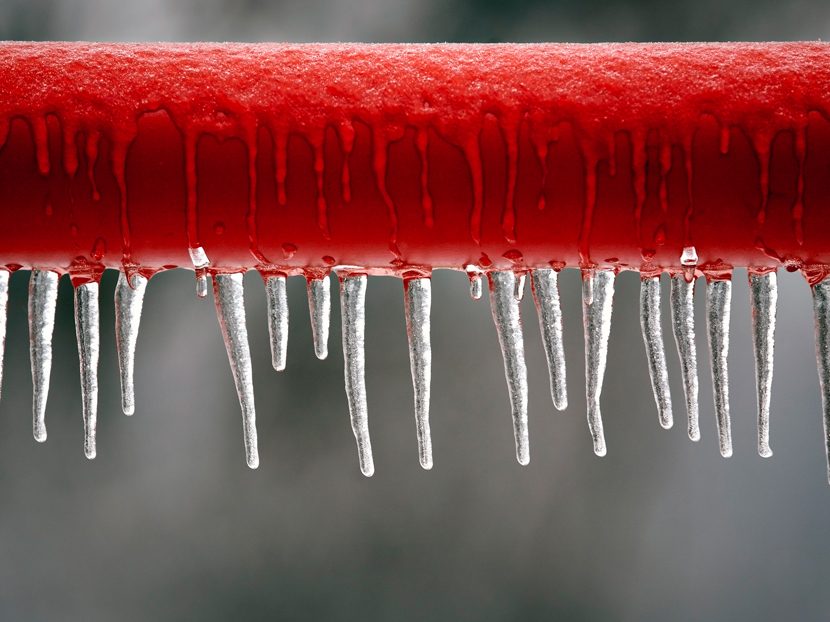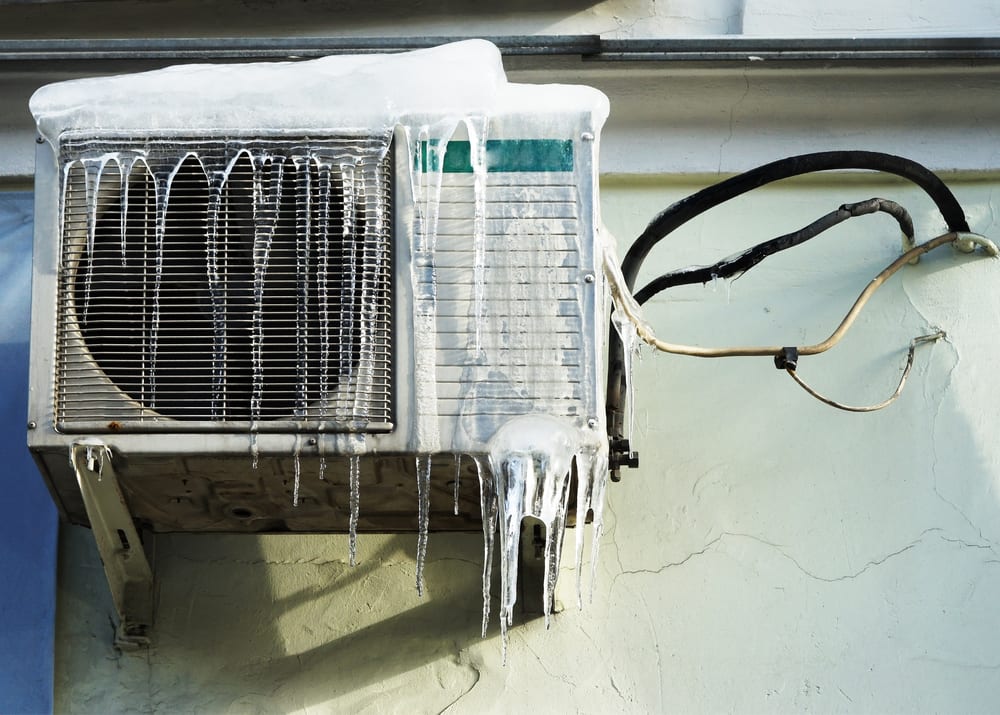What to Do If Your AC Pipe Freezes: Comprehensive Handbook
What to Do If Your AC Pipe Freezes: Comprehensive Handbook
Blog Article
The content in the next paragraphs about How can I fix an air conditioner’s frozen pipe? is immensely attention-grabbing. Read on and draw your own ideas.

Intro
Finding that your a/c pipe is frozen can be worrying, particularly throughout hot summertime when you depend on your a/c unit one of the most. Understanding what to do in such a circumstance is essential to prevent additional damage to your air conditioning system and ensure your comfort inside your home.
Recognizing the Causes
Numerous factors can contribute to the cold of an air conditioner pipeline. Comprehending these reasons can assist you deal with the concern successfully.
Absence of Airflow
One usual root cause of a frozen air conditioner pipeline is inadequate air movement. When the air flow over the evaporator coil is limited, it can trigger the coil to drop below freezing temperature, causing ice formation on the pipe.
Low Refrigerant Levels
Not enough cooling agent degrees in your a/c system can also cause a frozen pipe. Reduced refrigerant degrees can create the stress in the system to go down, leading to the cold of moisture on the evaporator coil.
Winter Conditions
In colder environments, freezing temperatures outside can add to the freezing of a/c pipes. If your AC device is not correctly protected or if there are leakages in the ductwork, chilly air can penetrate the system, triggering the pipeline to ice up.
Dirty Air Filters
Unclean or stopped up air filters can limit airflow in your air conditioner system, causing numerous problems, consisting of an icy pipeline. It's essential to replace or cleanse your air filters regularly to guarantee proper air movement and prevent ice accumulation.
Signs of a Frozen A/c Pipe
Identifying the signs of a frozen a/c pipeline is essential for timely action.
Reduced Airflow
If you discover a substantial decrease in airflow from your vents, it could show a frozen pipe.
Ice Buildup on the Pipe
Noticeable ice accumulation on the refrigerant line or the evaporator coil is a clear indication of an icy air conditioning pipeline.
Odd Sounds from the Unit
Uncommon noises, such as hissing or bubbling, coming from your air conditioning unit can signify that there's ice present on the pipeline.
Immediate Actions to Take
When confronted with an icy AC pipe, it's important to act rapidly to avoid additional damage to your cooling system.
Turning off the air conditioning
The initial step is to turn off your air conditioning unit to prevent the system from running and worsening the concern.
Checking for Blockages
Check the location around the indoor system for any obstructions that may be blocking airflow, such as furnishings or curtains.
Thawing the Pipe
You can utilize gentle approaches like positioning towels taken in warm water around the icy pipe to aid thaw it gradually.
Safety nets
Taking safety nets can assist avoid future occurrences of an icy air conditioner pipeline.
Regular Maintenance Checks
Schedule normal upkeep contact an expert HVAC technician to make certain that your a/c system is running effectively.
Altering Air Filters
On a regular basis change or cleanse your air filters to avoid air flow limitations and keep ideal performance.
Protecting Exposed Pipes
If your AC pipelines are exposed to chilly temperatures, think about protecting them to stop freezing throughout winter months.
Seeking Professional Help
If DIY techniques stop working to settle the issue or if you're unsure about how to proceed, it's ideal to look for help from a certified HVAC service technician.
When DIY Methods Fail
If your attempts to thaw the pipeline or address various other problems are unsuccessful, it's time to hire an expert.
Value of Hiring a Professional HVAC Technician
A qualified HVAC professional has the experience and tools needed to detect and repair issues with your air conditioning system safely and properly.
Final thought
Managing a frozen air conditioning pipe can be an irritating experience, however recognizing just how to respond can aid minimize damages and restore convenience to your home. By understanding the reasons, identifying the signs, and taking timely activity, you can properly resolve the concern and protect against future events.
Frozen AC Line: Why It Happens & What To Do About It
A frozen AC line can be a rather peculiar sight in a place like Phoenix, Arizona where nothing ever freezes. In this post, we’ll discuss what makes an air conditioner line frozen – and what you can do about it.
Dirty Air Filters
Did you know that you should be cleaning or replacing your air filters on a monthly basis? Failing to do this can result in airflow issues that, in turn, cause your evaporator coils and lines to freeze over. You’ll notice a buildup of ice on both components, although the buildup on your pipes will, of course, be more evident unless you open your air condition up to reveal the coils.
What To Do About It
Give your air filter a good cleaning if it’s reusable. If not, replace the filter outright. Next, switch your air conditioner’s fan setting on and leave it there for 2-3 hours. This will draw warm air in, helping to thaw your evaporator coil. You can also check out this article for some tips on cleaning the coils themselves if you’d like to speed the process up. Before you switch the unit back to its normal state, make sure the supply vents are completely unobstructed and free of dust or other debris.
If you keep having this issue even after replacing your filters regularly, contact a local HVAC repair company and have them inspect your evaporator coil, ductwork, and any other components that may be at fault. If you live in the Phoenix, Arizona area, give American Home Water and Air a call.
Low Refrigerant Levels/Leakage
What To Do About It
Contrary to what air conditioner “recharge” companies often tell their clients about refrigerant, it should never need to be simply refilled. You see, refrigerant runs in what experts refer to as a “closed loop.” Refrigerant really shouldn’t be leaving that loop. If it is, you’ve got a leak.
Paying someone to come and pump more refrigerant into your system (aka “recharge” it) isn’t the solution. Doing that will simply kick the can down the road. Besides, refrigerant leaks can be harmful to the environment and people in your home.
Rather, you need to take care of the leak with the help of a technician. Check out this article for some more information about dealing with air conditioners that are leaking refrigerant. Before you contact a technician, switch your thermostat to the off position. Then, switch the fan setting on and let it run for 2-3 hours so the unit can thaw.
Improper Temperature Setting
Improper temperature settings can also cause a drop in your air conditioner’s pressure. What many people don’t realize is that air conditioners are actually designed to run when temperatures have fallen above roughly 60 degrees Fahrenheit. If you run the unit when it’s cold outside, you’ll run into many issues, including frozen components.

We had been made aware of that editorial on Have a Frozen AC Line? Here’s How to Fix It from someone on another blog. Remember to set aside a second to distribute this blog entry if you enjoyed it. Many thanks for your time. Please visit our blog back soon.
Call Today Report this page